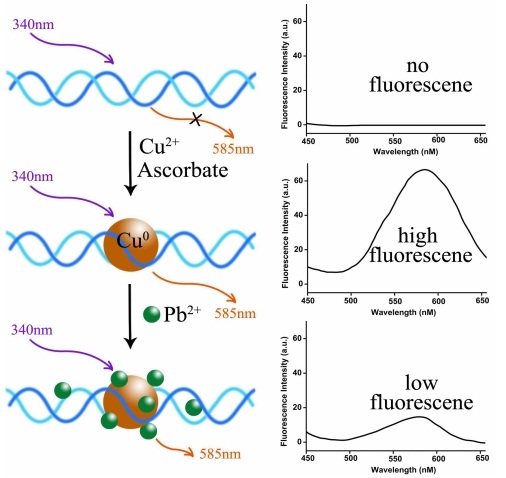A Sensitive and Label-free Biosensor for Lead Detection Based on Novel Fluorescent Copper Nanoparticles
Dr. ZENG Lingwen’s group at GIBH have developed a novel, simple, and label-free method for the detection of Pb2+ using random dsDNA-templated formation of copper nanoparticles (CuNPs) as fluorescence probe in aqueous media.
The group found that the fluorescence emission intensity of the dsDNA-CuNPs was sensitive and proportionately decreased with the increasing concentration of Pb2+ and no noticeable change in the maximum or shape of emission spectra accompanied the fluorescence decreasing. The dsDNA-CuNPs provided excellent selectivity for Pb2+ over other metal ions, and also high sensitivity, with a detection limit of 5 nM, which is much lower than the maximum level (72 nM) of Pb2+ in drinking water permitted by the United States Environmental Protection Agency (EPA).
This biosensor avoids the need to adopt specific Pb2+-dependent DNAzyme or G-quadruplex for Pb2+ detection and eliminates the use of sophisticated experimental techniques and equipments. This findings have been published in Chemical Communications (Chem. Commun., 2012, 48, 1057-1059).
http://pubs.rsc.org/en/content/articlelanding/2012/cc/c2cc16668b
